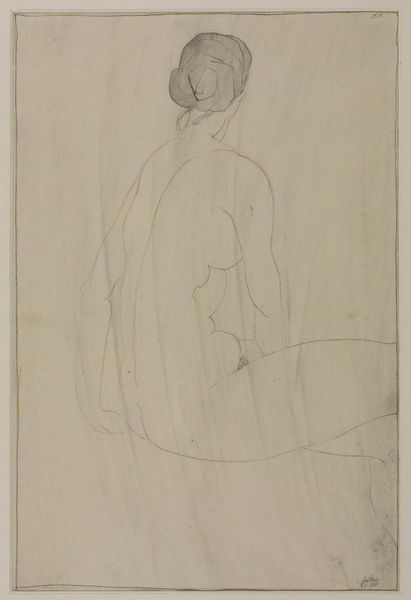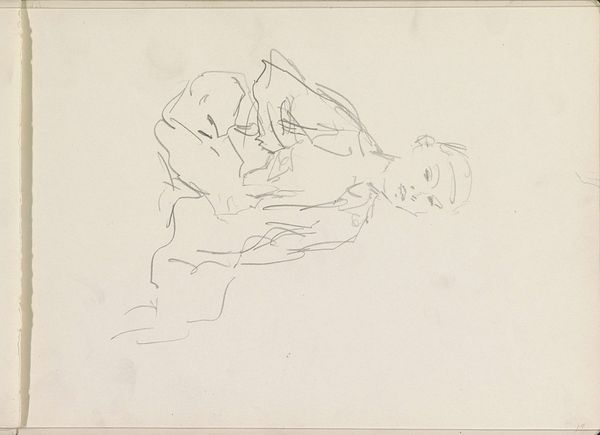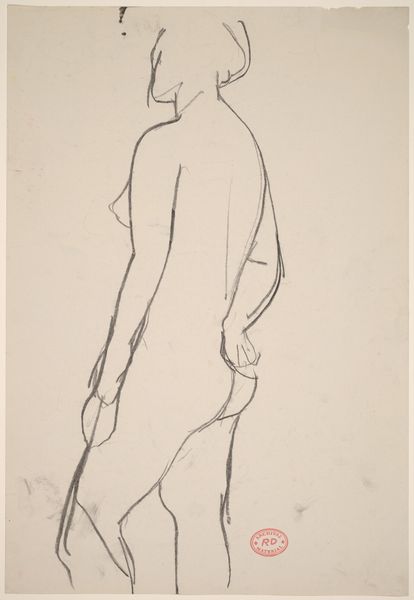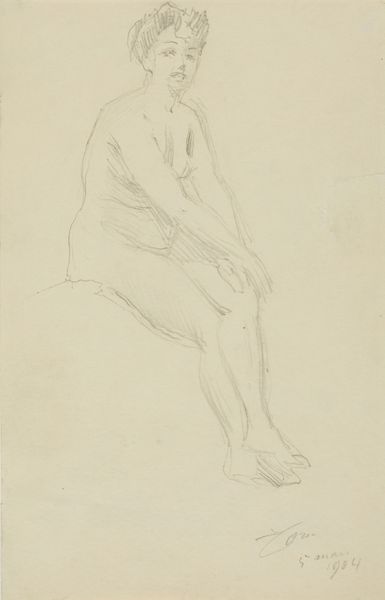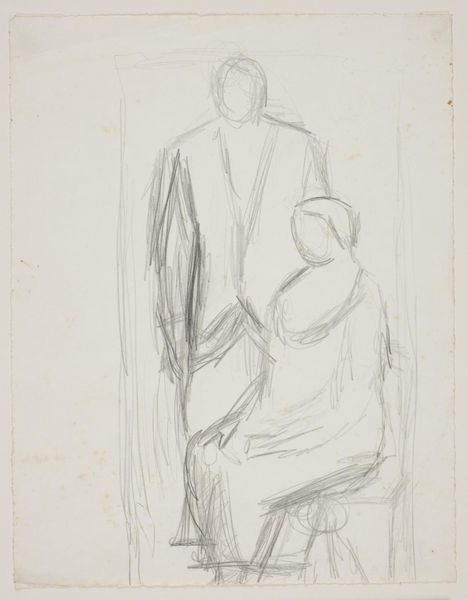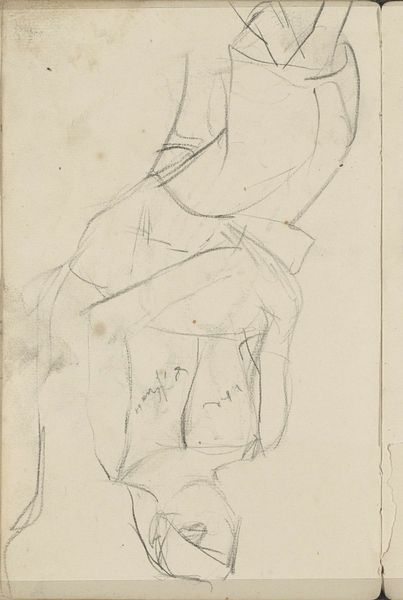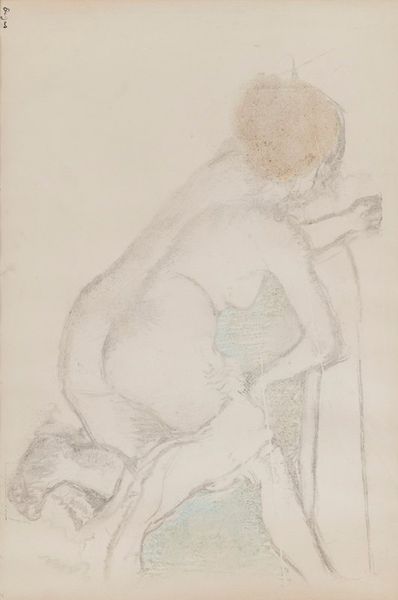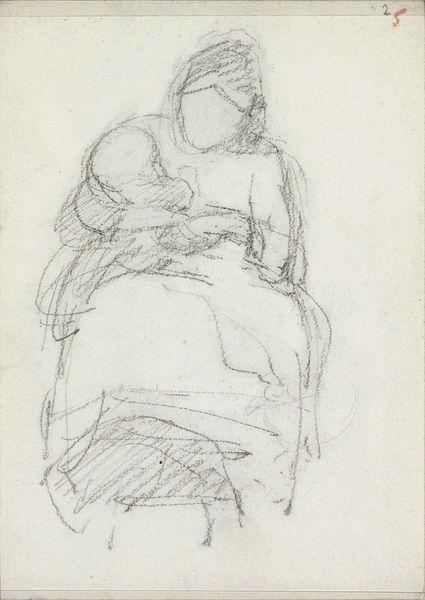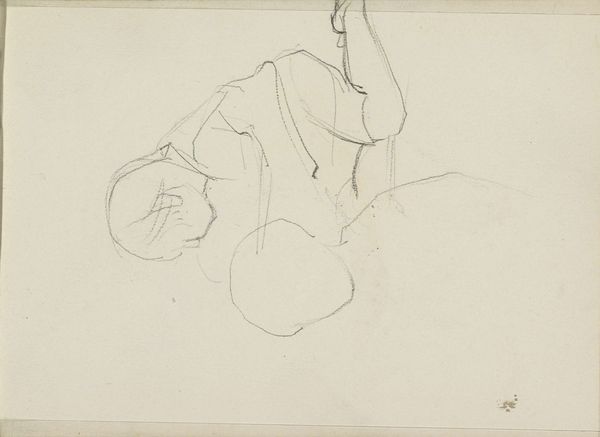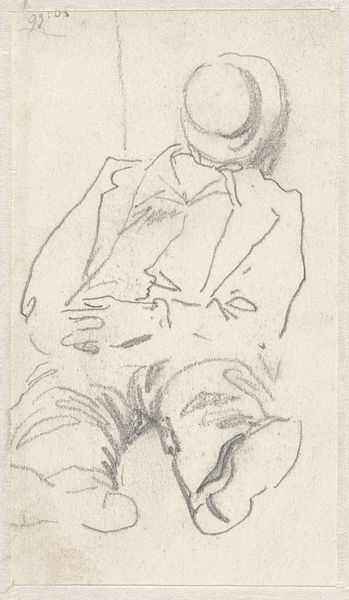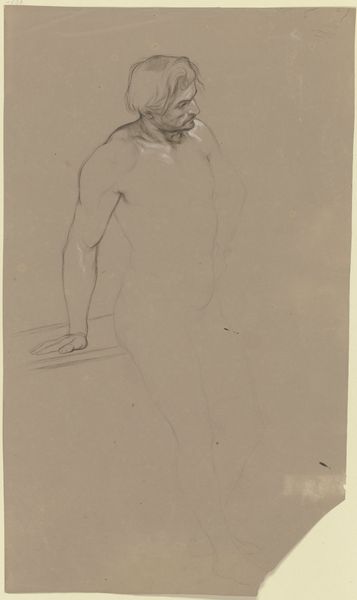
Dimensions: support: 127 x 89 mm
Copyright: CC-BY-NC-ND 4.0 DEED, Photo: Tate
Editor: This is James Kerr-Lawson's sketch "J. Havard Thomas Asleep," created around 1910. It's a simple graphite drawing, but there's something very intimate about it. What stories do you think this drawing might be telling? Curator: It's interesting to consider this image within the context of labor and leisure. Who was J. Havard Thomas? Was he part of the artistic circles of the time? This image captures a moment of rest. What does it mean to depict a man, presumably of some status, in a state of vulnerability or relaxation? Editor: I hadn't considered the power dynamics at play. Is it about capturing a moment, or perhaps something more profound about privilege and observation? Curator: Exactly. And how does the artist's gaze, Kerr-Lawson's gaze, influence our perception of Thomas? We must ask ourselves whose perspective is being centered and how does it shape our understanding. I wonder what Thomas would have thought of it? Editor: That’s a crucial question. I'll definitely look at this differently now, thinking about the gaze and the power dynamics involved. Curator: Precisely. Art invites us to question these dynamics and reflect on the social structures that shape our lives.
